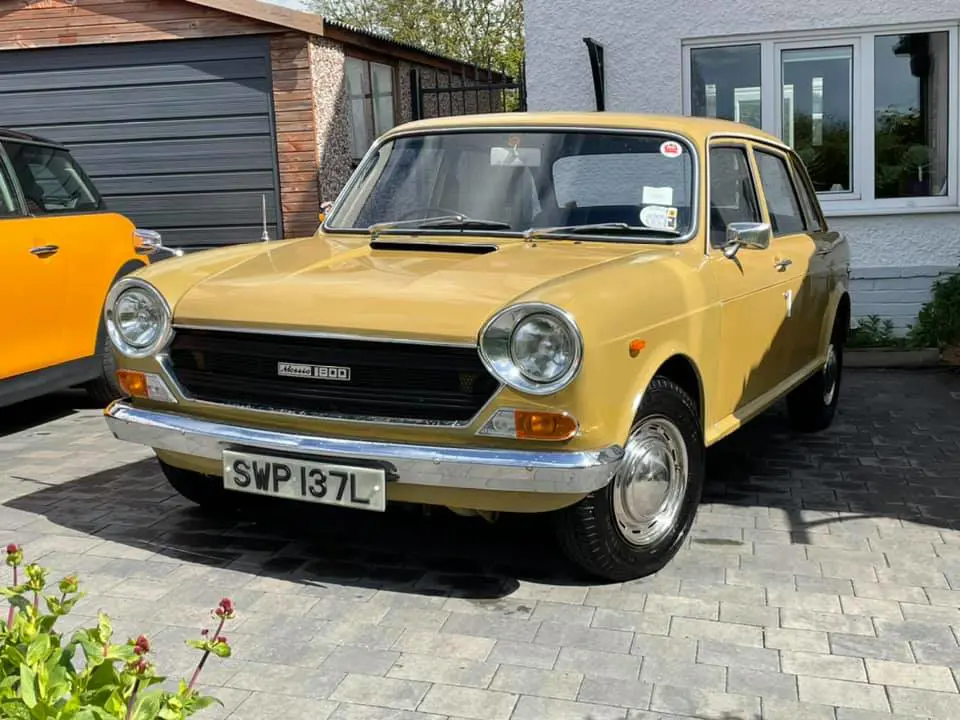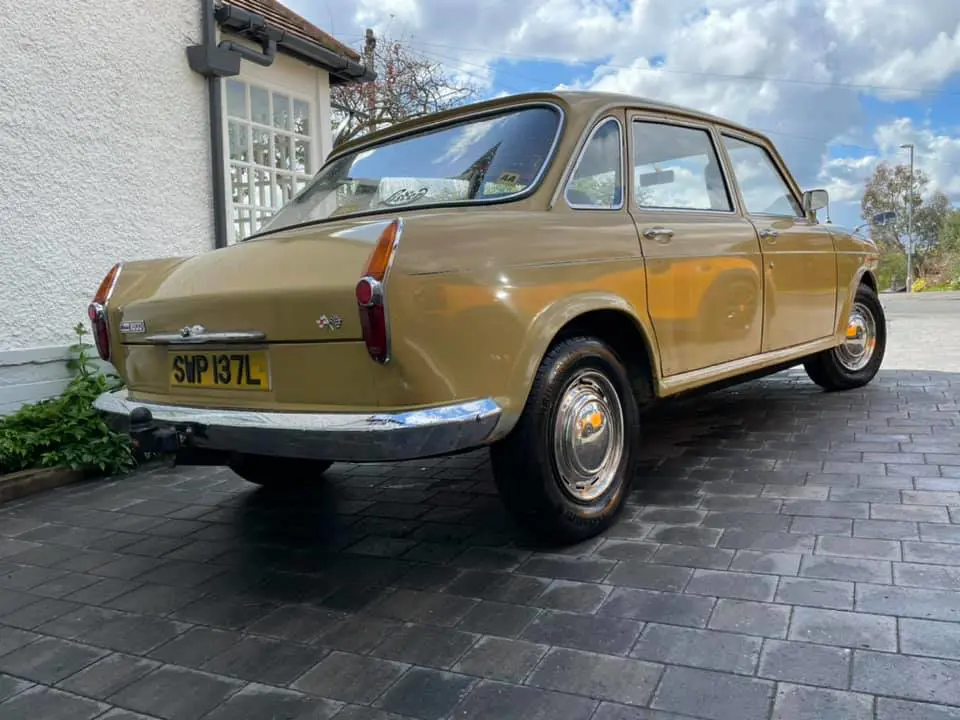MEET THE OWNER – CAMERON BURNS AND HIS MORRIS 1800
15 June 2021
After recently succumbing to the lure of the ‘Landcrab’, Cameron Burns bought himself an 1800 Mk 3. His Morris was fitted with several decadent extras: reclining front seats, hazard warning lights, an alternator and a heated rear screen. Its Harvest Gold paintwork and plastic ‘wood’ fascia is uber-1973, into the bargain. This is the sort of car that belonged in a suburban avenue of “executive villas” with trips to Woolco every Saturday.
The original Austin 1800 debuted in 1964 and was proclaimed Car of the Year 1965. It was subsequently joined by a badge-engineered Morris version in 1966 and the flagship Wolseley the following year. BLMC facelifted the range the Mk 2 in 1968 and the Mk 3 in 1972; the third-generation versions were also available in 2.2-litre six-cylinder form. The 18-22 ‘Wedge’ succeeded the Landcrab in March 1975.

Leyland introduced the 1800/2200 Mk 3 the same year as its principal British rivals, the Consul/Granada 2-Litre and the Vauxhall Victor FE. The Ford had faintly Germanic lines while the Vauxhall favoured a quasi-American look – with both favouring a straightforward sort of engineering. By contrast, many a 1972-vintage fleet manager in his Harry Fenton suit still regarded front-wheel-drive and transverse engine with some suspicion.
Furthermore, the Landcrab’s appearance was not universally appreciated. Car magazine rudely suggested that it was a mistake for BLMC “to retain the Austin 1800 body at all”. It went on to claim: ‘It’s a styling disaster in every sense for it has the aerodynamics of a Dutch barn and looks just about as attractive.” Today, most enthusiasts prefer the term ‘individualistic’.
The Morris appears to be the rarest survivor of the 1800/2200 Mk 3 line-up and Cameron is the fourth custodian of SWP 137 L. He said: “The original owner’s widow was aged 104 when she sold the Landcrab.” Mr. Burns is much taken with the 1800’s comfort and spaciousness although he finds the steering somewhat heavy as PAS was standard only on the 2200.

Cameron’s previous experience of FWD BL motoring was in the form of a 1973 Midnight Blue Austin Maxi 1500, and he finds the Morris somewhat different to drive. He admitted: ‘I do miss the fifth gear as it is economical and so useful on the motorway.”
However, the Landcrab comes into its own for caravanning as Mr. Burns runs the very popular NotAnotherWhiteBox YouTube channel.
And so SWP will join Cameron’s Rover Three Thousand Five as a tow car. Cameron plans to partner it with his 1966 Sprite 400, which his grandparents bought in 1972. The caravan’s interior features a gas light (“granddad fitted it with 12-volt lamps”), a gas tap for a fire, a two-burner grille and the optional foot pump for the sink. The overall effect will be akin to a scene from Carry On Behind.
As for the public reaction to the 1800, Cameron said: “Most people recognise it not only as a Landcrab but as Morris.”
It is a car with the power to evoke countless fond memories, be it of family transport or watching Terry Scott and June Whitfield in Happy Ever After. The brochure claimed a Morris 1800 Mk. 3 possessed “…the zest of a Mini with all the room of a limousine’ – which perfectly encapsulates the Landscrab’s appeal.
With Thanks To: Cameron Burns
Why choose Lancaster Insurance?
Here at Lancaster, we love classic cars as much as you do and we understand what it takes to protect them for future generations.
We have links with some of the top classic car clubs around the country and some of our policies even offer discounts of up to 25% for club members.
Other benefits of classic car insurance through Lancaster can include:
- Historic rally cover
- Static show cover
- Limited mileage discounts
- Choice of repairer
- 24-hour claims helpline
Give your classic the protection it deserves and get a quote for your classic today.
